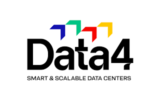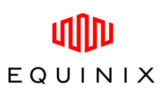5 best practices in monitoring the environmental footprint of data centers
Data centers and corporate IT infrastructures in general have a significant environmental footprint. However, deploying an effective strategy for monitoring and reducing their impact is by no means straightforward, given the many factors involved and the multiple ways of approaching them. In this article, we invite you to discover five "SMART" best practices for measuring and limiting the environmental footprint of your IT infrastructures.
In the same way as other strategies (commercial, economic, financial, etc.), CSR (corporate social responsibility) initiatives, one of whose challenges is to implement actions aimed at reducing environmental impacts, can only be effective if objectives are defined according to the SMART approach:
- Specific, i.e. with a precise, customized objective. The more precise the objective, the more focused the efforts required to achieve it.
- Measurable: measurable data enables us to ensure that objectives are achieved or not.
- Ambitious: the objective must be ambitious in terms of the skills and resources available.
- Relevant: an over-ambitious objective that is out of touch with reality can lead to the failure of the strategy.
- Time-bound: finally, the objective must have a clear deadline.
So, for example, “reduce the environmental footprint of IT infrastructures by 50% by 2030” is what we might call a SMART objective. In the context of data center operations, which are by definition multi-factorial, we propose five best practices for SMART monitoring the environmental footprint of these IT infrastructures.
1. Optimizing data center load factors
The data center load factor is the ratio between the electrical power actually used by IT equipment and the total power available to supply this equipment. Suitable design and appropriate sizing of IT resources therefore contribute to energy efficiency and reduced infrastructure costs. To achieve this objective, the following additional actions can be implemented:
- Analysis of the activity of physical and virtual machines deployed, such as their number and type, frequency, resources used, etc.
- Integration of the impact of operational constraints, such as SLAs or contractual service levels.
- Identification of resource problems: saturated network usage, overloaded physical machines, or on the contrary, under-used equipment that needs to be switched off, etc.
- Replacement of defective resources with servers natively designed to optimize power consumption, such as the servers of the Open Compute Project (the Open Compute Project).
2. Analyzing environmental impacts using a life-cycle approach
It can’t be said often enough: supervising and making important decisions means measuring relevant indicators. Consequently, the first step in any approach to reducing environmental impacts is to quantify them.
Proven and recognized for its effectiveness, life cycle assessment (LCA) is a standardized method for measuring the quantifiable effects of products or services on the environment. LCA takes into account all stages of a system’s life cycle (manufacture, use and end-of-life) during its analysis.
The principles, requirements and procedures for LCA are defined by international standards ISO 14040 and ISO 14044. This multi-criteria approach is based on a number of indicators for analyzing incoming and outgoing flows, i.e. everything that goes into manufacturing the product (iron, water, oil, gas resources, etc.), and everything that is produced in terms of pollution (waste, gaseous emissions, waste liquid, etc.).
The life cycle assessment integrates the activity of the data center examined and its challenges. To avoid misinterpretations linked to pollution transfers, the life cycle assessment must integrate environmental indicators such as:
- energy consumption,
- greenhouse gas emissions,
- water consumption,
- depletion of abiotic resources,
- production of electronic waste.
LCA provides an overall picture of the environmental impact of IT infrastructures and helps to identify levers for improvement, as well as the system elements needing to be prioritized for action to reduce the environmental footprint.
Good practice is to carry out this type of analysis every two to three years, to ensure that the initial areas for improvement have had the desired effect once implemented.
3. Tracking data center indicators
Once the life cycle assessment has been conducted, the levers for improvement identified must be continuously monitored, using simple environmental indicators based on consumption (water, energy, etc.), or more complex ones based on efficiency measures:
- Power consumption
This is a very easy indicator to track, as it is reported by the electricity supplier, who bills according to actual consumption. Very often, electricity consumption is also measured at IT equipment level, or in terms of primary uses, such as air conditioning, ventilation or electrical security.
- PUE (Power Usage Effectiveness)
PUE is the best-known indicator. It measures the energy efficiency of the IT infrastructure, i.e. the consumption of IT hardware itself, but also the energy needed to cool equipment and other ancillary requirements.
This is the ratio between the total energy consumed by equipment (IT and ancillary equipment), divided by the energy dedicated to IT production. PUE is used to estimate the energy cost of infrastructure. It provides an estimate of the effects of variations in energy consumption. PUE has no unit: the closer it is to 1, the more efficient the data center is considered to be.
- CUE (Carbon Usage Effectiveness)
This indicator complements the PUE. It measures greenhouse gas emissions generated by the operation of the IT infrastructure.
This is the ratio between the total CO2 emissions related to the total energy consumption of the data center and the energy consumption of the IT equipment. This indicator helps operators choose the most efficient technologies in terms of greenhouse gas emissions. It also makes it possible to assess the relevance of improvement actions to be implemented to reduce greenhouse gas emissions. It is expressed in kgCO2 per kWh IT.
All these indicators complement each other. They need to be measured and interpreted together, to identify the effectiveness of actions to improve the overall environmental performance of the data center.
4. Establishing regular reporting of environmental performance indicators
It’s good to know how to measure indicators. Regular monitoring is even better, especially when automated via a dedicated dashboard.
The dashboard provides a global view of all the relevant indicators to be analyzed, for monitoring and steering environmental performance, and eliminates uncertainties. It is also a real decision-making tool, as when compared with reference values, indicators can be used to assess the environmental health of the infrastructure, diagnose the causes of unachieved results, analyze discrepancies and take appropriate remedial or corrective action.
Monitoring the environmental performance of IT equipment can also involve the use of tools such as DCIM (Data Center Infrastructure Management), designed to manage IT infrastructure within a single system based on common processes: change management, incident management, maintenance management and so on. The aim is to extend ITIL best practices across the entire chain, from IT equipment to data center infrastructure.
5. Raising awareness and training stakeholders
Monitoring the environmental footprint of IT infrastructures must also take into account the availability of well-trained and aware human resources, who can then play a full part in the overall process of monitoring environmental performance.
This also implies excellent communication between the many and varied stakeholders, such as systems and network engineers, developers, and so on. Long-term, multi-channel communication: on-site posters, information on best practices, challenges between teams, internal competitions, and hackathons, as well as environmental awareness campaigns.
In addition to raising awareness and involving players in their respective areas, the aim is also to adopt a global strategy for measuring and improving the environmental footprint of IT infrastructures.




















